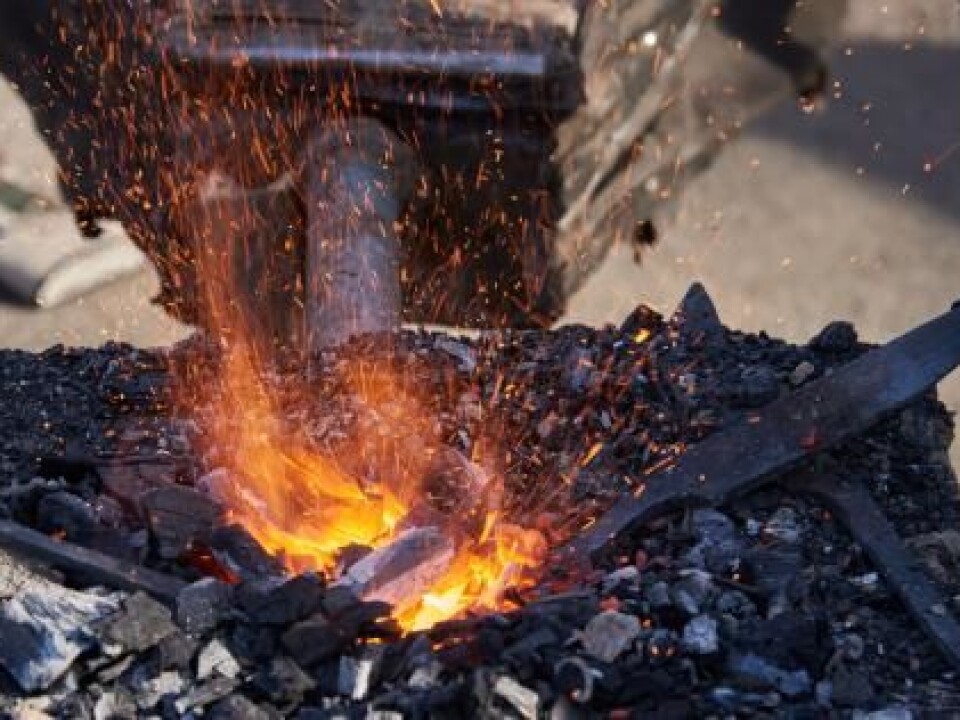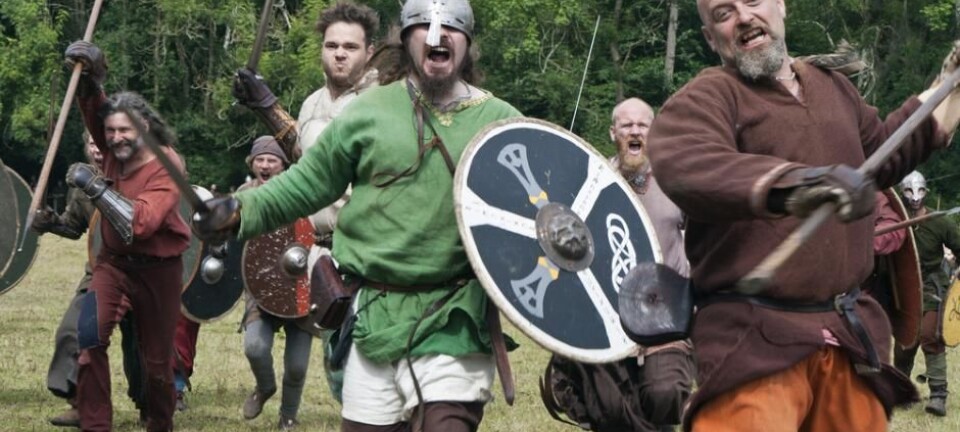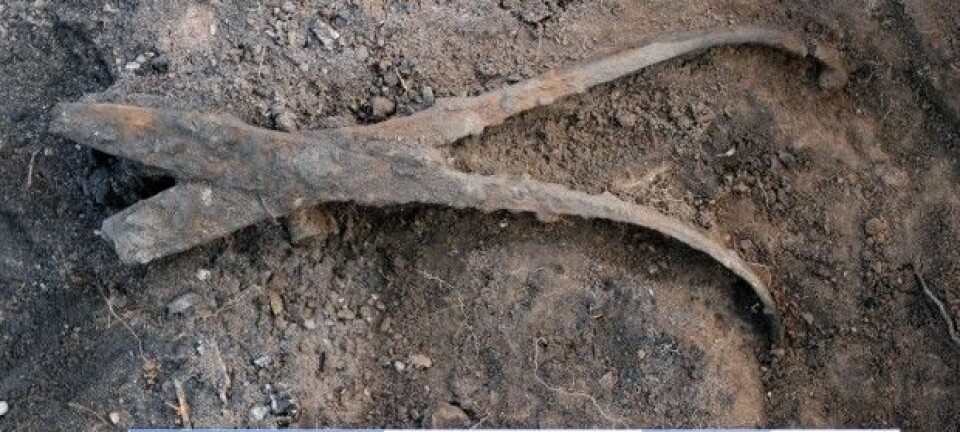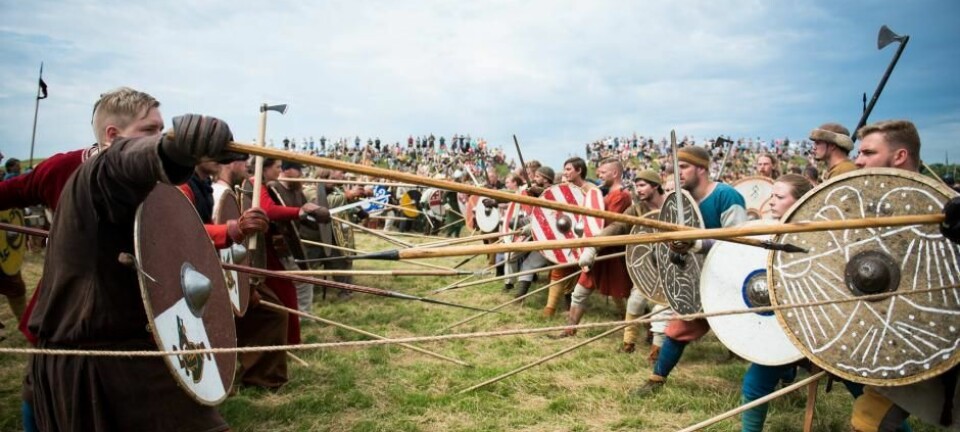
Scientists: Pointless to rename the Viking Age
The Steel Age could be a more appropriate name for what we call the Viking Age, says one archaeologist. But the new name is inappropriate, say her colleagues.
If you travel back in time to Scandinavia at the end of the ninth century and asked a contemporary what time you had landed in, they would definitely not say “the Viking Age.”
But they may say “the Steel Age” because at this time, steel was a newly developed and revolutionary material, which was hugely important for work and everyday life in Scandinavia.
So says archaeologist Henriette Lyngstrøm from the University of Copenhagen, Denmark. She thinks that the Viking Age could be more appropriately termed, the Steel Age.
Read More: Archaeologist: The Viking Age should be called the Steel Age

The “Viking Age” does more harm than good in archaeology, says Lyngstrøm.
“It’d make much more sense if we called it the Steel Age, because it would make us more open-minded with the period without constantly having images of Vikings spring to mind,” she says.
“The Viking Age is a good brand”
But the suggestion has not gone down well with archaeologist Jens Ulriksen, head of research at the Museum of South East Denmark.
“To be frank, I don’t care. It could just as well be called the Soren Age,” he says.
“I’m more interested in what the period of time is, and when it began and ended, than what it’s called. Moreover, the Viking Age is a good brand. There’s no need to change it,” says Ulriksen.
Steel was important in the Viking Age
Ulriksen agrees that the introduction of steel in Denmark is a good way to define the period to a certain extent, as it characterises local events in Scandinavia, in a way that the “Viking Age” does not.
“One of the functions of the definition of the Viking Age as it is today, is that it’s based on events and battles that happened in England and not in [Scandinavia],” he says.
It’s reasonable enough to want to base the name of the period on the archaeological material, says Ulriksen. But he doubts it will catch on.
“It doesn’t make sense”
The “Steel Age” does not improve the definition according to archaeologist Andres Dobat from Aarhus University, Denmark.
“It doesn’t make sense. It’d just be yet another analytical framework to control our view of history,” he says.
But the Viking Age is problematic, he says. And it has achieved such a star status that we risk overlooking other interesting archaeological periods.
“The interest in the Viking Age is completely manic. It can be quite grotesque, even for those who work in the field--everything’s about the Viking Age. And the Viking Age is over represented in research communication, because everyone is crazy about it,” says Dobat.
So the discussion about nomenclature is important as it at least increases awareness of this period’s special status, he says.
“It’s good to have a more critical approach to the glorification of the Viking Age. We should do away with all this ‘wow that’s great!’ and ‘oh my god how amazing is that!’ Remember that when the Viking kings lived in a house with half painted walls, the Italian people lived in marble castles,” he says.
The concept of a Viking Age is like a comfortable pair of shoes
Dobat introduces his students to how the concept of the Viking Age was first introduced in the late 19th century.
“After [the loss in] 1864, Denmark needed to dwell on a period when they were great. And it’s stuck ever since,” he says.
“Even today, when globalisation and EU-membership can threaten national identify. We grab the Viking Age like a comfortable pair of shoes that make us feel safe again,” says Dobat.
But this is not necessarily a problem, according to Ulriksen. He is tired of the whole discussion that has been circulating in archaeological circles for many years, he says.
“There’s a kind of hypersensitivity to anything that faintly whiffs of national identity. Some section of society feels bad about romanticising the Vikings, and I don’t get it,” he says.
For Ulriksen, it can only be a positive thing if people are interested in the Viking Age.
Name change is unrealistic
Lyngstrøm agrees with her colleagues that renaming the period is in fact unlikely to happen. But this is precisely why the conversation is important, she says.
“Even though it’s unrealistic to change the name to the Steel Age, it’s healthy to turn things upside down sometimes,” says Lyngstrøm.
“You could say that in this way it’s just an academic exercise, especially for archaeologists. We’re locked into the terminology and perhaps a debate can help,” she says.
Lyngstrøm still hopes for a name change, one day.
“I say this to all my students, so perhaps the Steel Age will breakthrough in 20 to 30 years’ time.”
------------
Read the Danish version of this story on Videnskab.dk
Translated by: Catherine Jex









